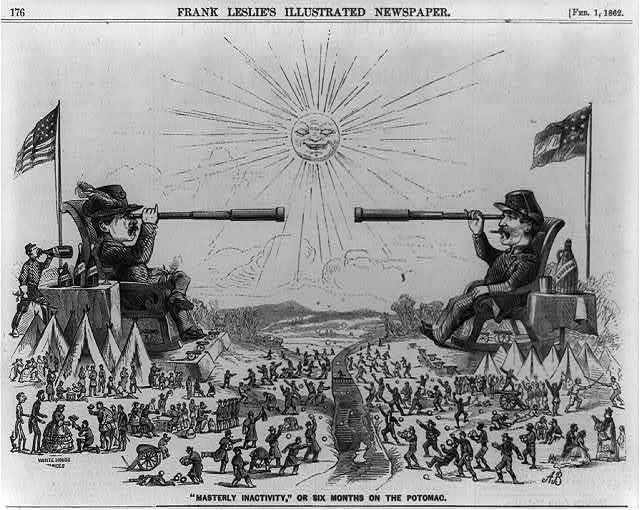You do know there is a relationship between sea state and the wind? In fact I know you do so I am sure you are aware that visibility conditions are not likely to be optimal once the battle gets going.
Of course - but, nevertheless, if the
Monitor is fighting the waves are going to be calm; that is, in sheltered waters. While I'm aware the conditions are not going to be ideal, see below about target practice.
The other thing we tend to notice about battles is that people rarely fire to the max theoretical mechanical rate.
Yes; nevertheless the relative expected rates of fire per gun are roughly 12:1 and
Thunder has more guns. It's not in doubt that
Thunder would be putting dozens of shot into
Monitor over the course of a single quarter hour, while
Monitor can get maybe one non-penetrating hit in return. (Their expected disparity of shots is, roughly speaking, that
Monitor fires two shots over the course of twelve minutes and
Thunder fires 168 back.)
Another point about messing bout in boats is that they move relative to one another which even when the word slowly means walking speed or less will still result from time to time in ships being out of optimum firing positions, which especially in a broadside arrangement can mean masking one or more guns.
The RN didn't do target practice in glass calm, so it's relatively comparable.
Thunder has enough gunports to give four guns firing ahead or astern, so it's not as though she has any particular aspect where
Monitor can park herself with impunity.
And I can tell you, being shot at is nowhere near the same thing to target practice. The gunnery in any fight will rarely be as good as at target practice.
Yes, I'm aware - which is why I suggest 30% hit rates in calm water at 500 yards, not nearly 100%. 25% accuracy was attained in practice at 2,500 yards, 75% at 1,500 yards (all with smoothbores, all from a rolling ship against a target with half the size of
Monitor's turret)
As for being under fire,
Monitor can, at maximum rate, get off one shot per six minutes (one per 12 minutes per gun). This is enough time for several reloading cycles for
Thunder between shots.
This is the thing - I'm
already significantly discounting the ability of the
Thunder compared to target practice, it's my general rule. Now, if I was using
target practice rates neither
Galena nor
Monitor would get within a thousand yards of the
Thunder, but I'm strictly sticking to a heavily discounted scheme.
Under this scheme, a single broadside at 500 yards should be doing noticeable damage to the
Monitor (Seven shots, two hit, both of them shatter their way past a plate or two as the plate is so brittle). A few broadsides should do enough concussive damage to her spindle to have a significant probability of disabling her turret, and if she's been in the fight for over half an hour then
Thunder has probably nearly emptied her magazines into
Monitor and
Monitor's turret is riddled, with her guns disabled long ago and her gun crew slaughtered by spall. Realistically she'd retreat well before that.
The Monitors historically were all capable of taking a tremendous beating, and here the ship did, and her crew didn't get away unscathed.
But I'm not aware of any Monitor taking the kind of close range pounding that this one did -
Monitor took a heavy battering from
Virginia, but
Virginia was mostly firing shell rather than shot (having expended most of her shot the previous day) and later monitor-type designs were both significantly uparmoured and never engaged at close range with armour-piercing weapons.
Put simply, of the two it's
Monitor which is vulnerable to a relatively small number of hits and not
Galena.
Galena has backing, a single hit can only disable 1/6 of her guns (rather than all of them) and there's plenty of her target profile which a shot can hit without doing something immediately very deletrious to her ability to fight.
Certainly
Galena shouldn't be being sunk. If the
Thunder can put broadsides into
Galena's waterline she can do the same to
Monitor - the waterline is, definitionally, at water level - and if the
Monitor loses watertight integrity she's very promptly dead, while
Galena has actual reserve bouyancy.

